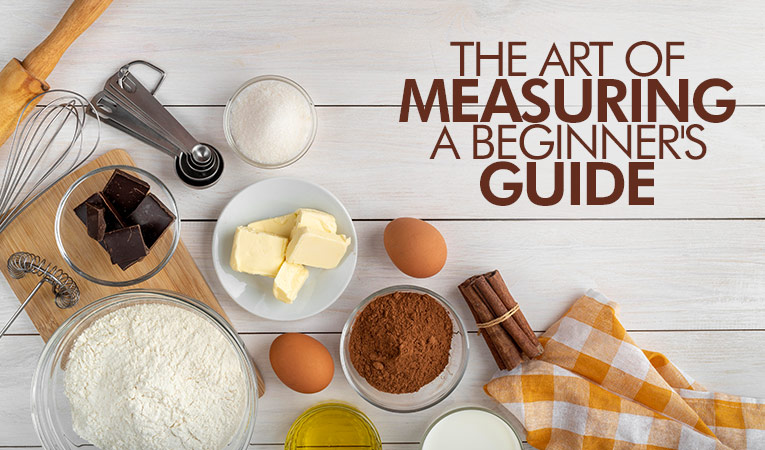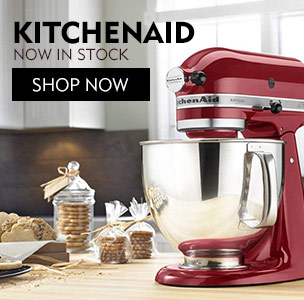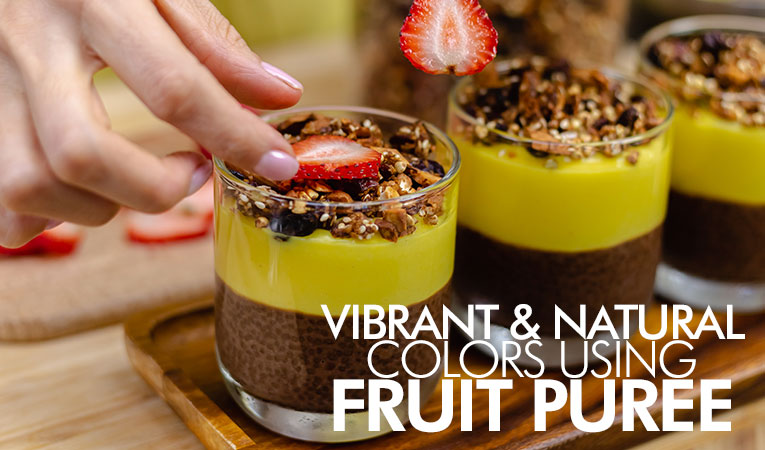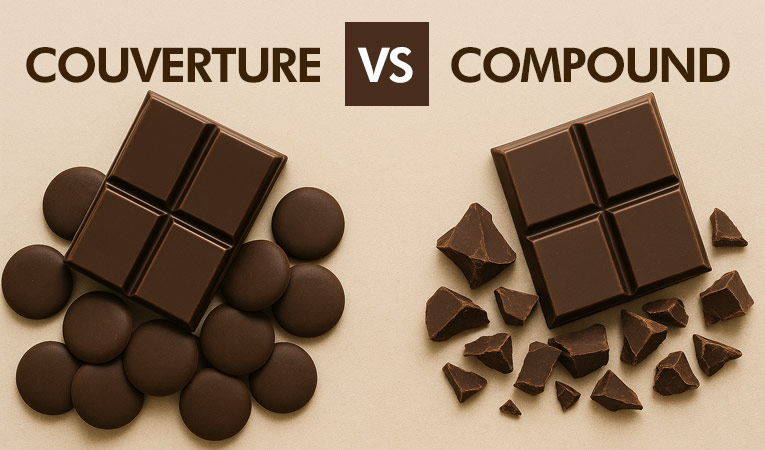The Art of Measuring: A Beginner's Guide to Baking Measurements
26-05-2023

In the world of baking, precise measurements are key to achieving consistent and delicious results. This beginner's guide to baking measurements will take you through the importance of accurate measuring, the types of tools used, techniques for measuring different types of ingredients, common baking measurements, and valuable tips and tricks for ensuring accuracy in your baking endeavors.
Why Measuring is Important in Baking?
In this section, let's delve into why accurate measuring is vital in baking. We will highlight key points that emphasize the importance of precise measurements to achieve successful and delicious baked goods.
- Accurate measurements ensure consistent results and help maintain desired texture, flavor, and structure.
- Proper measurements prevent under or over-mixing, resulting in well-balanced flavors and optimal texture.
- Precise measurements ensure correct chemical reactions, such as leavening agents, leading to perfectly risen baked goods.
- Consistent measurements allow you to replicate recipes and achieve the same delicious results each time.
Types of Tools Used in Measuring:
- Measuring Cups: Measuring cups are a fundamental tool in baking and are used to measure dry ingredients such as flour, sugar, and cocoa powder. They come in different sizes, typically 1 cup, 1/2 cup, 1/3 cup, and 1/4 cup. Measuring cups are designed with a handle and a flat rim, allowing you to level off the ingredients for accurate measurements. When using measuring cups, it's important to spoon the dry ingredients into the cup and level it off with a straight edge to ensure precision.
- Measuring Spoons: Measuring spoons are essential for measuring small amounts of ingredients, such as baking powder, salt, spices, and extracts. They usually come in sets, including 1 tablespoon, 1 teaspoon, 1/2 teaspoon, and 1/4 teaspoon measurements. Measuring spoons are designed with narrow heads to easily fit into spice jars and containers. To measure with spoons accurately, fill the spoon with the ingredient, leveling it off with a straight edge for precise amounts.
- Kitchen Scale: A kitchen scale is an ideal tool for precise measurements by weight. It is especially useful when dealing with ingredients that require a specific weight, such as butter, chocolate, or fruits. Kitchen scales come in both analog and digital versions, allowing you to measure ingredients in grams, ounces, or pounds. To use a kitchen scale, place a bowl or container on the scale, reset it to zero, and then add the ingredient until the desired weight is reached.
- Liquid Measuring Cups: Liquid measuring cups are specifically designed to measure liquid ingredients accurately. They have a spout and clear markings on the side for easy reading. Liquid measuring cups come in different sizes, usually in cups, ounces, and milliliters. When using a liquid measuring cup, place it on a flat surface and pour the liquid into the cup until it reaches the desired level at eye level for precise measurements.
Having these essential measuring tools in your baking arsenal will ensure that your recipes turn out consistently delicious. Whether it's measuring dry ingredients with cups and spoons, weighing ingredients with a kitchen scale, or accurately measuring liquids with liquid measuring cups, these tools will help you achieve the perfect balance of flavors and textures in your baked goods.
Types of Ingredients in Baking & Techniques to Measure Them:
In this section, we will delve into the two broad categories of baking ingredients: dry ingredients and wet ingredients. Discover the specific ingredients that fall under each category and explore the essential tools used to measure them accurately, ensuring optimal results in your baking endeavors.
Dry Ingredients:
Dry ingredients include flour, sugar, cocoa powder, baking powder, and spices. These ingredients provide structure, texture, and flavor to baked goods. Here are some common techniques used to measure dry ingredients accurately:
- Flour: Spoon the flour into the measuring cup and level off the excess.
- Sugar: Spoon or pour the sugar into the measuring cup and level off the excess.
- Cocoa Powder: Spoon or sift the cocoa powder into the measuring cup and level off the excess.
- Baking Powder: Use a measuring spoon to scoop the required amount of baking powder.
- Spices: Use a measuring spoon to scoop the desired amount of spices.
Wet Ingredients:
Wet ingredients include liquids such as water, milk, oil, eggs, and extracts. These ingredients add moisture, flavor, and richness to baked goods. Here are some common techniques used to measure wet ingredients accurately:
- Water and Milk: Use a liquid measuring cup to pour and measure the required amount of water or milk.
- Oil: Use a liquid measuring cup or a measuring spoon to pour or scoop the required amount of oil.
- Eggs: Crack the eggs into a separate bowl and use a whisk or fork to measure the desired amount.
- Extracts and Flavors: Use a measuring spoon to scoop the desired amount of extracts or flavors.
Accurate measurement of both dry and wet ingredients is essential for successful baking. By following these techniques, you can ensure precise measurements and achieve consistent results in your baking endeavors.
Common Baking Measurements:
Let's dive into the world of common baking measurements and explore how they play a crucial role in achieving baking perfection. Whether you're measuring teaspoons and tablespoons, cups, fluid ounces, or grams, understanding these measurements and using them accurately will ensure your baked goods turn out just right. Let's unravel the secrets of precise measurements and unleash your baking prowess!
- Teaspoon (tsp) and Tablespoon (tbsp) Measurements: Teaspoons and tablespoons are used for smaller measurements in baking. They are commonly used for ingredients like baking powder, salt, vanilla extract, and spices. It's important to use leveled measurements for accurate results. A standard set of measuring spoons includes 1/4 teaspoon, 1/2 teaspoon, 1 teaspoon, and 1 tablespoon.
- Cup Measurements: Cup measurements are widely used in baking and provide a convenient way to measure both dry and liquid ingredients. Common cup measurements include 1/4 cup, 1/3 cup, 1/2 cup, and 1 cup. It's important to use dry measuring cups for dry ingredients and liquid measuring cups for liquids to ensure accurate measurements.
- Fluid Ounce (fl oz) Measurements: Fluid ounces are used to measure liquid ingredients in baking. Common fluid ounce measurements include 1 fl oz, 2 fl oz, 4 fl oz, and 8 fl oz (equivalent to 1 cup). Liquid measuring cups typically have clear markings and spouts for easy pouring and accurate measurement of liquids.
- Gram (g) Measurements: Gram measurements are often used in more precise baking recipes, especially when it comes to ingredients like flour, sugar, and butter. A kitchen scale is essential for measuring ingredients by weight in grams, ensuring accuracy and consistency in your baking.
Remember, different ingredients have different weights and volumes, so it's crucial to follow the specific measurements provided in your recipe. Using the appropriate measuring tools and techniques will help you achieve consistent and successful results in your baking endeavors.
Conversion Table: Dry and Wet Ingredient Measurements
Explore the comprehensive conversion table below, providing accurate measurements for commonly used dry ingredients and wet ingredients in baking. Easily convert between cups and grams for precise and successful culinary creations.
Dry Ingredients:
| Ingredient | 1/4 Cup | 1/3 Cup | 1/2 Cup | 2/3 Cup | 3/4 Cup | 1 Cup |
|---|---|---|---|---|---|---|
| All-Purpose Flour | 31 g | 42 g | 63 g | 83 g | 94 g | 125 g |
| Bread Flour | 34 g | 45 g | 68 g | 91 g | 102 g | 136 g |
| Cocoa Powder | 21 g | 28 g | 43 g | 57 g | 64 g | 85 g |
| Powdered Sugar | 30 g | 40 g | 60 g | 80 g | 90 g | 120 g |
| Rolled Oats | 21 g | 28 g | 43 g | 57 g | 64 g | 85 g |
| Sugar (Granulated) | 50 g | 67 g | 100 g | 134 g | 150 g | 200 g |
| Packed Brown Sugar | 55 g | 73 g | 110 g | 147 g | 165 g | 220 g |
Wet Ingredients:
| Ingredient | 1/4 Cup | 1/3 Cup | 1/2 Cup | 2/3 Cup | 3/4 Cup | 1 Cup |
|---|---|---|---|---|---|---|
| Butter | 57 g | 76 g | 113 g | 151 g | 170 g | 227 g |
| Honey, Molasses & Syrup | 85 g | 113 g | 170 g | 227 g | 255 g | 340 g |
| Water | 59 g | 79 g | 119 g | 158 g | 178 g | 237 g |
| Milk (Whole) | 62 g | 83 g | 125 g | 166 g | 187 g | 249 g |
Please note that the gram equivalents for specific ingredients may vary slightly. The values provided are approximate conversions.
Tips and Tricks for Accurate Measurements:
Here are some handy tips and tricks for capturing accurate measurements and ensuring precision in your baking recipes. Mastering these techniques will help you achieve consistent and delicious results every time you step into the kitchen.
- Use the appropriate measuring tools for each ingredient.
- Level off dry ingredients using a straight edge.
- Fill liquid measuring cups at eye level.
- Ensure your scale is calibrated and accurate.
- Properly pack ingredients like brown sugar if required.
Conclusion:
We hope this beginner's guide to baking measurements has provided valuable insights into the art of measuring in baking. Accurate measurements are essential for achieving consistent and delicious results. Remember to use the right tools, follow proper techniques, and employ helpful tips and tricks for accurate measurements in your baking adventures. If you have any questions or comments, please feel free to leave them below. Happy baking!





